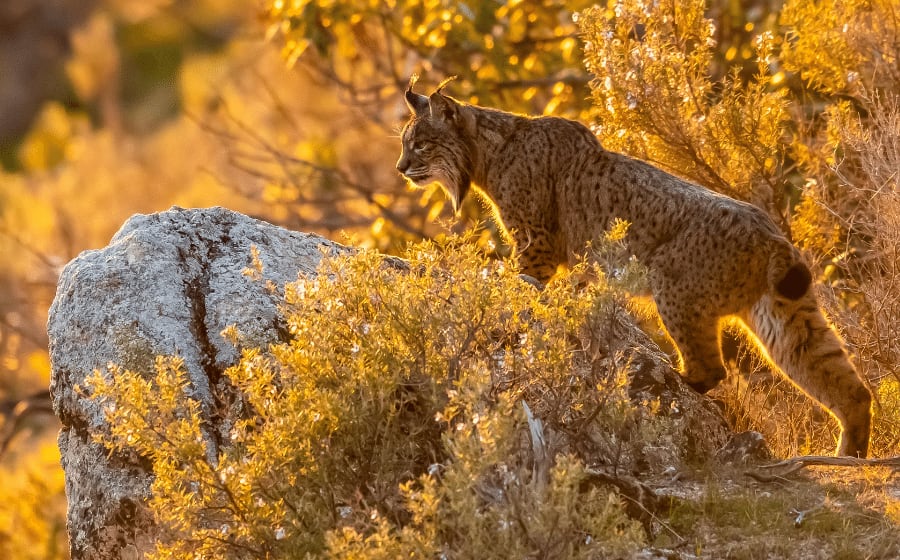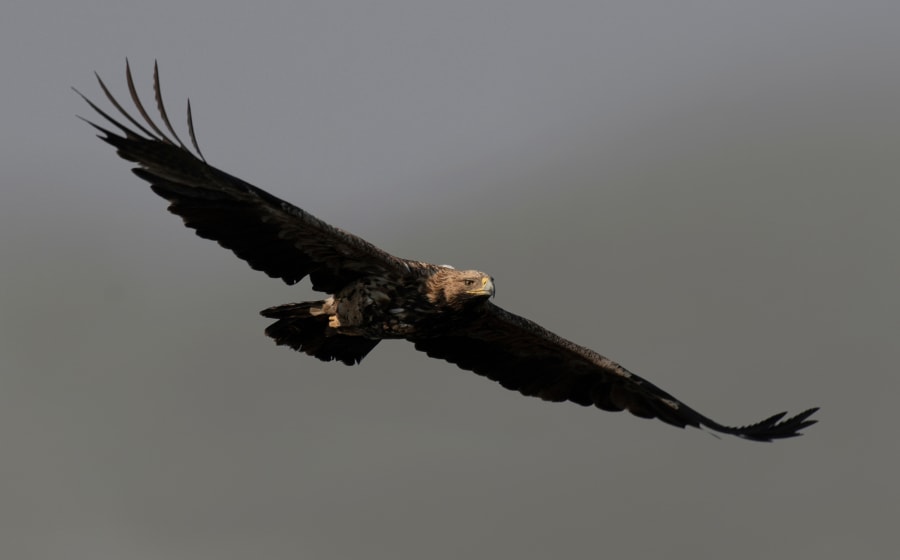The Most Common Birds found in Spain + 8 Endemic Species
October 22, 2022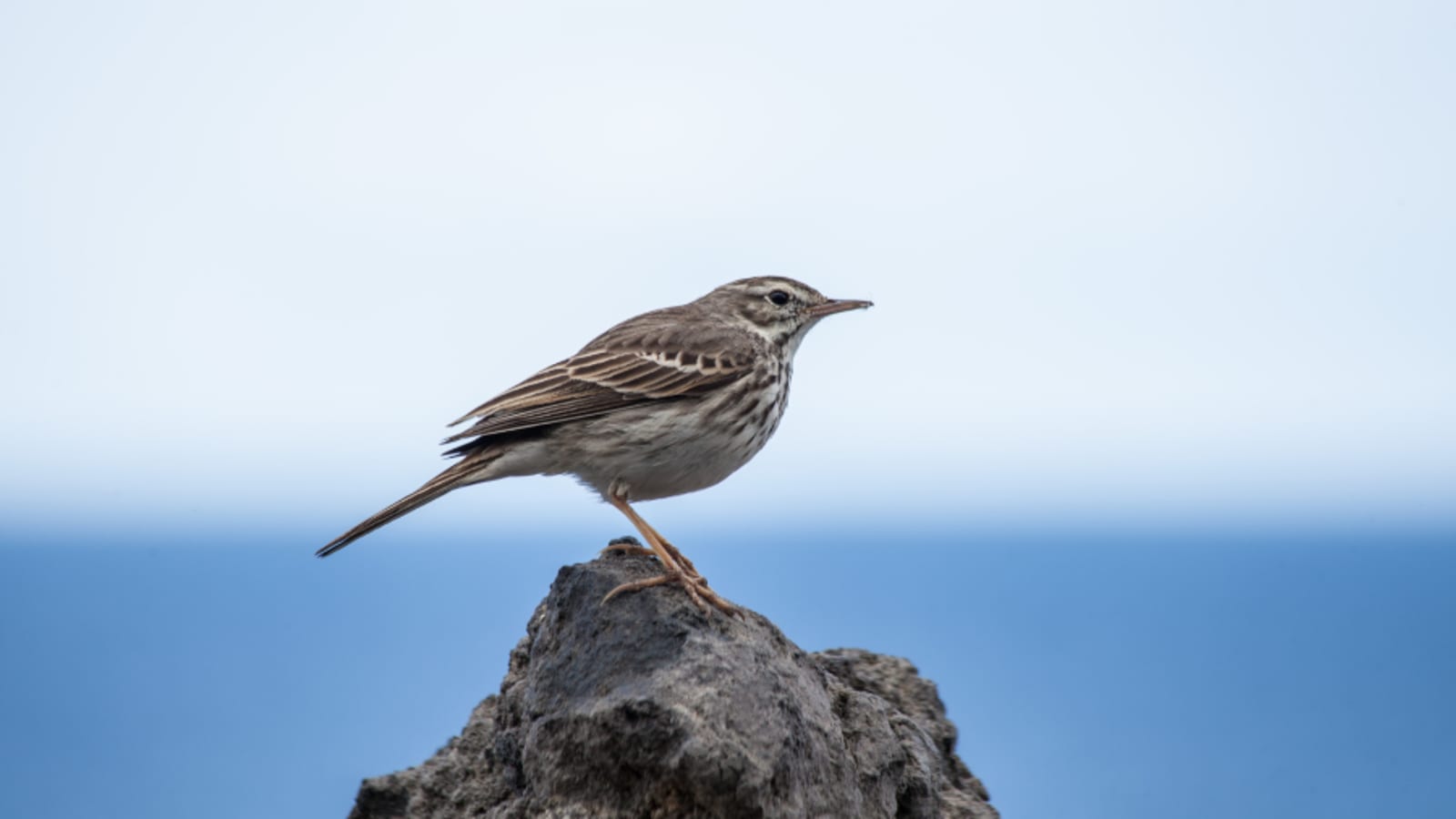
Win a FREE Trip to Spain!
Exciting Announcement! For the first time, we're thrilled to offer exclusive trips to the heart of Spain - an experience like no other. This isn't your typical tourist journey; it's a unique opportunity to immerse yourself in authentic Spanish culture, alongside real locals and our passionate team.
But there's more! Simply by requesting information about this amazing trip, you'll be entered into a special draw to win a Fully Paid Trip to Spain for Two. And that's not all - everyone who inquires will receive an exclusive bonus gift, valued at $500, available only now.
Ready to Discover the Real Spain?Click Here ↑ to Request Information & Enter the Draw!
Grab your binoculars because we’re going birdwatching!!!
Spain is one of the European countries with the most bird species around the year, since most emigrate in Spring and go away in September to the African Continent to survive.
We need to take care of our beloved endemic species. To me, the perfect way to show respect and gratitude is by sharing with the world the beauty of our fauna and embracing it.
This is why I want to show you everything about birds in Spain, our protected species, and a table of the 100 most watched birds by Spaniards ranked by the frequency they’re watched!!
I have a whole article dedicated to Spanish biodiversity, in case you want to smoothly get into the topic before talking about our endemic bird species, here it is:
But, if you’re ready to discover all the birds you can only see in Spain, listen up!
Table of Contents ▼ ▶
1. La Curruca Balear
Sylvia balearica
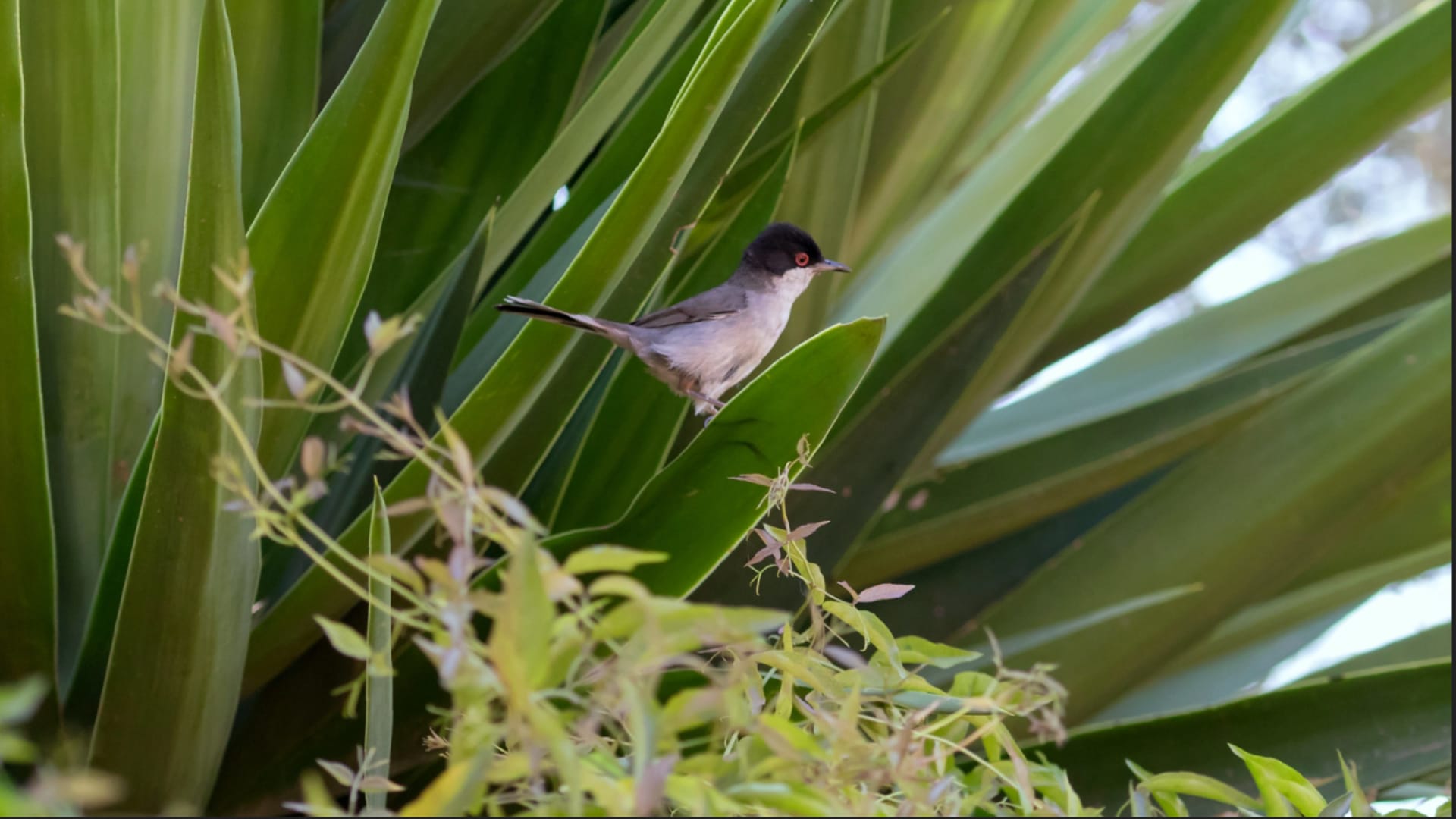
Let’s begin with the Balearic warbler (Sylvia balearica), a typical warbler of the Sylvia genre. It is endemic to the Balearic Islands (An Autonomous Community in Spain -To understand Spain’s territorial organization I suggest you to take a look at this post: Does Spain Have States? Discovering all 50 provinces and regions).
It’s natural habitat is the Mediterranean scrub, from the low garriga to the juniper. And it avoid forests with tall trees and farm fields.
Balearic warblers are gray on top and a dark bluish-gray, slate-colored back with a pinkish tint. And, adult males have darker spots on the forehead, between the eye and the pointed bill, and their legs are red.
These birds lay their eggs for up to 2 to 3 broodsand and are also insectivorous. Its main characteristic is its long tail and overall dark hue with a white throat. The head exhibits darker greyish tones, and the red eye ring stands out, although the young and females in their first winter have it light in color.
“La Curruca Balear” is not always easy to see as it stays low in the scrub but it’s a very atractive type of bird for most bird-watchers! However, you can see the Balearic Warbler in the Boquer Valley, a very good place with some pairs on the slope, just when the sea can be seen and always below knee height. Also in Cala Sant Vicenç and Son Real.
But the most guaranteed place to observe it during the spring is in the Talaia de Albercutx, where people often see them making their calls in flight on high areas. Some other places to see them are Porto Colom, and Cabrera, on the east coast, and in the south of the Iberian Peninsula.
I can show you the most incredible places to visit in Northern and Southern Spain which are an absolute must!
- Cities in Northern Spain: 8 locations and best spots to visit
- Time to add these Lovely Southern Spain Cities to your bucketlist!
2. El Mosquitero Canario
Phylloscopus canariensis
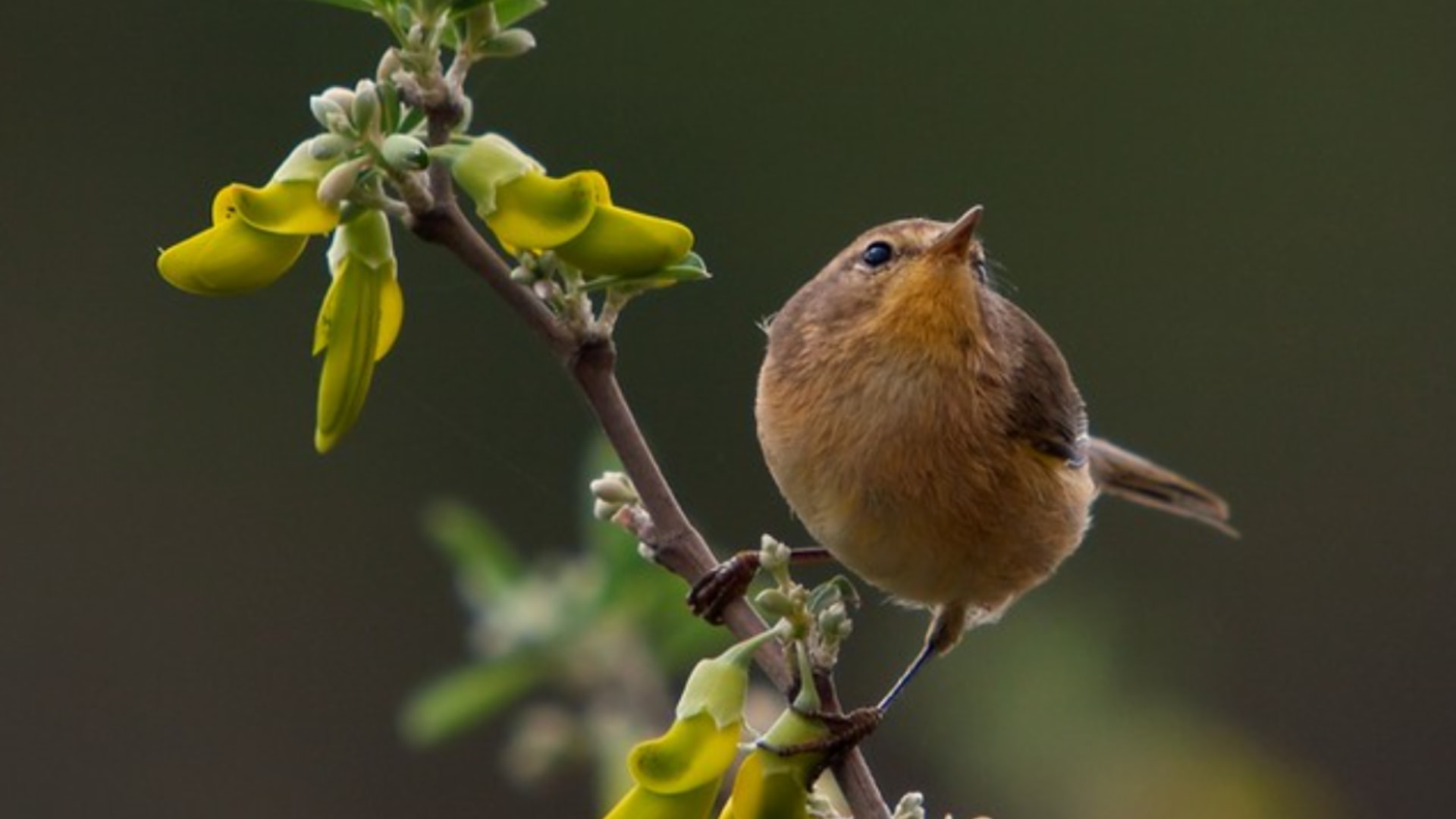
The Canary Chiffchaff (Phylloscopus canariensis) is a passerine bird species in the Phylloscopidae family endemic to the Canary Islands. It has been considered for years as a subspecies of the common chiffchaff. The populations of the easternmost islands became extinct and the last ones disappeared in Haría towards the end of the 1980s. It is a small little bird of about 4.7-5.5 inches.
Also very similar and closely related to the common chiffchaff (Pylloscopus collybita) and the Iberian chiffchaff (Phylloscopus ibericus). As a matter of fact, it was considered a subspecies of P. collybita, until some genetic studies suggested that it belong to its own specie.
Therefore, it is an endemic species of the Canary Islands. Specifically, it lives in Gran Canaria, Tenerife, La Gomera, El Hierro and La Palma. This little bird can be found in almost all habitats from the coast to the summit. However, it is not found in Fuenteventura and Lanzarote, one of the most arid islands of the archipelago, since this bird requires a certain vegetation development to live in. Such as pine forests and mixed forests, laurel forests, thickets, reedbeds, and is also common in crops and gardens and feeds mainly on small insects.
3. La Paloma Turqué
Columba bollii
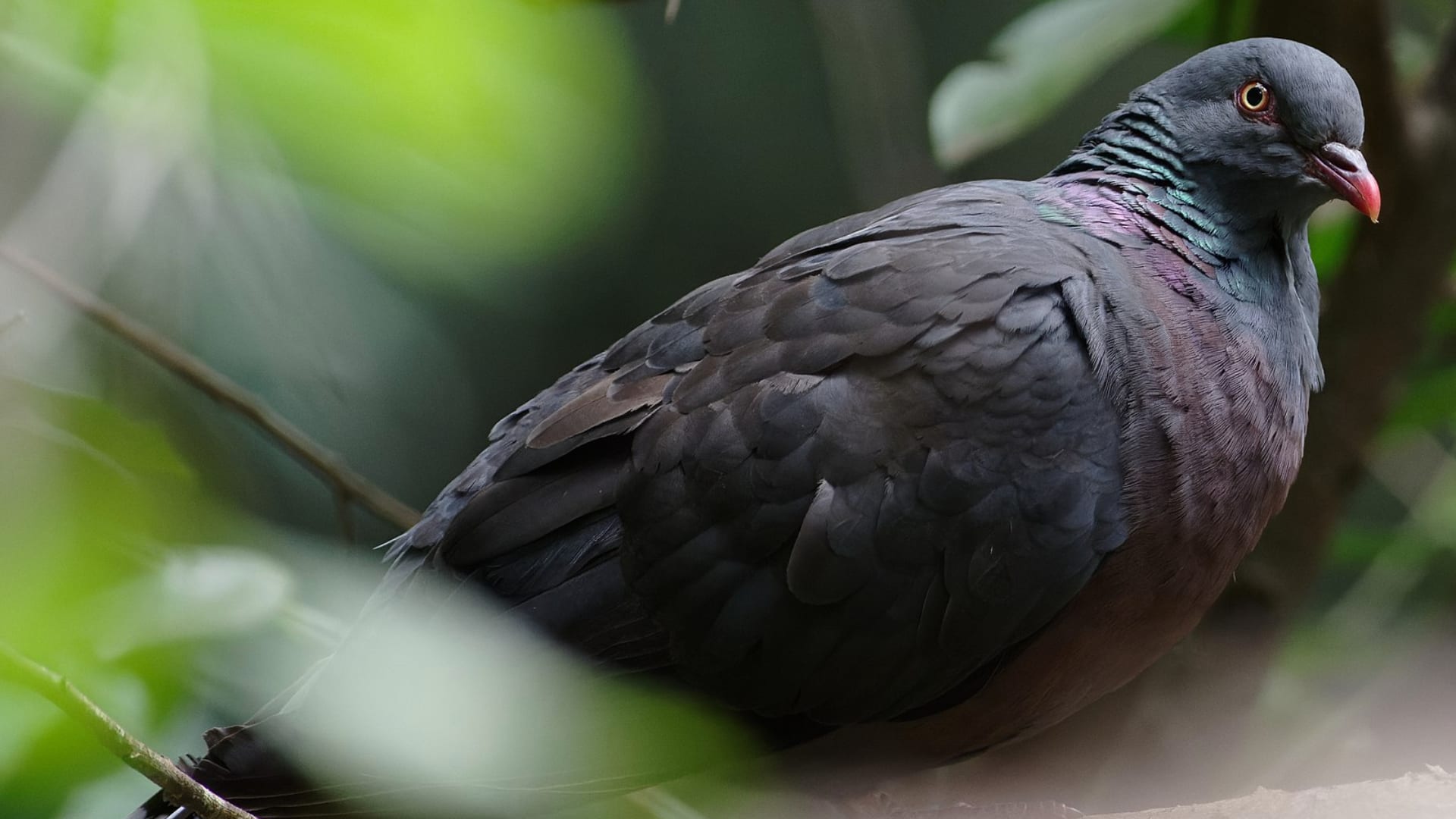
The Turquoise Pigeon (Columba bollii) also known as: torcaz, torcasa, turquoise, turcón, black pigeon or Moorish pigeon. Its name is due to the German naturalist Carl Bolle. It is found in Tenerife, La Palma, El Hierro and La Gomera.
La Paloma Turqué is a bird species in the Columbidae family. It is very rare within the Spanish avifauna since its only found in the laurel forests of the Canary Islands, where it shares a habitat with its relative, the rabiche pigeon.
It is, along with the Paloma Rabiche (coming next), one of the two endemic species of pigeons in the Canary Islands.
It is a large, sedentary pigeon of approximately 13.7795 inches long and 25.5 - 26.7 wingspan. It is robust, with a gray body and wine-colored chest with green and pink reflections. The tail has a dark stripe at the end and a white one at the front while its short wings are darker. The beak is reddish and orange at the tip. When young, they do not show the neck reflexes; the beak is grayish, turning reddish when mature.
4. La Paloma Rabiche
Columba junoniae
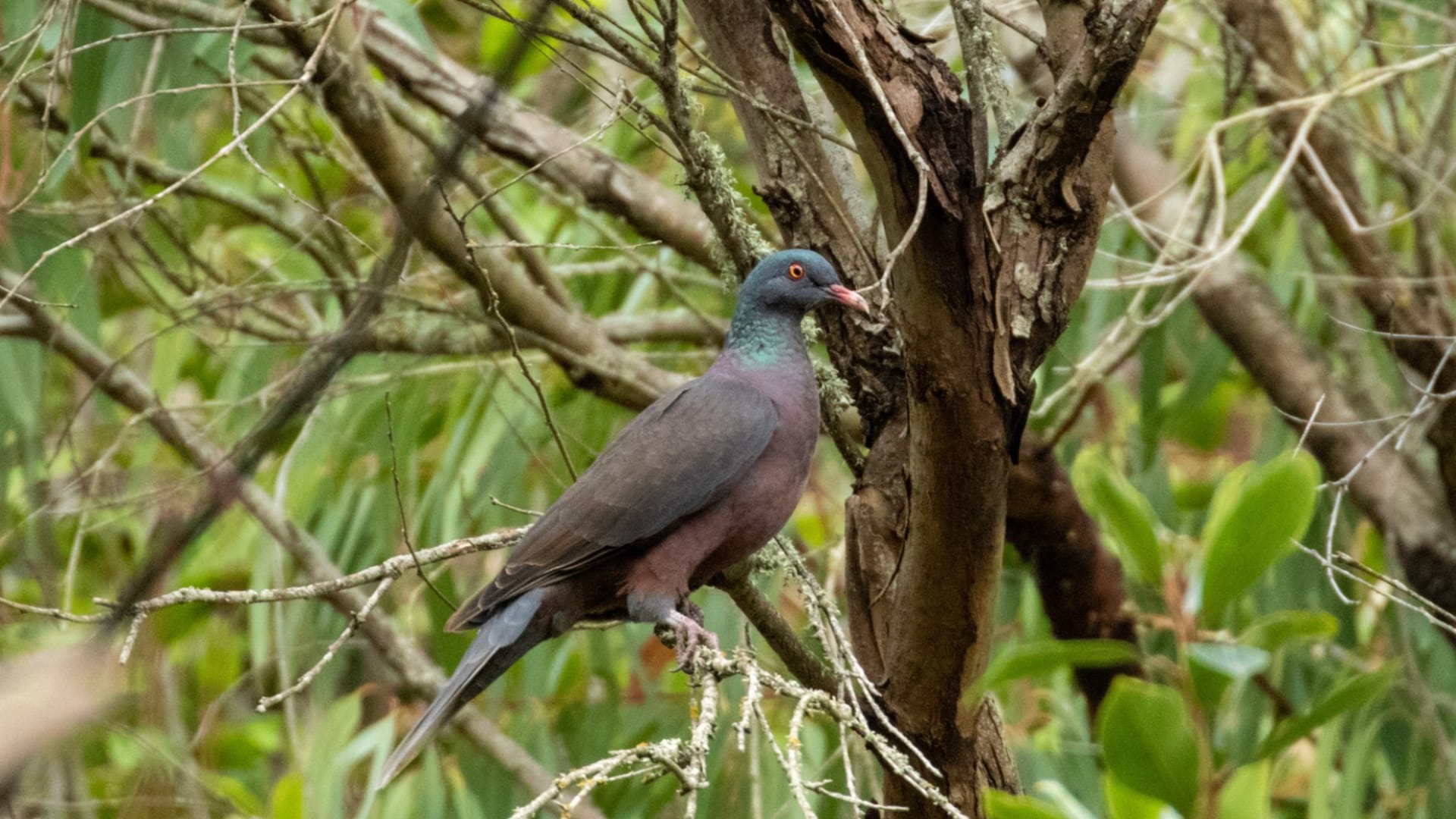
Robust and brightly colored, the Paloma Rabiche distributes on the latter island throughout Tenerife, La Palma and La Gomera. In Spain, it is considered an animal symbol since it is currently in danger of extinction.
Its preferred habitat is mainly the laurel forest and monteverde. It looks for food near plantations and inhabits lower areas than the Turquoise pigeon since it does not seem so dependent on the laurel forest. Its diet is mainly frugivorous, basically a fruit diet. It also takes advantage of the seeds and fruits of cultivated fields.
But what does it look like? It is large and robust bird of approx 15.7 inches. It has a dark reddish body, a gray head, and a neck with bluish-green reflections. And, similarly to the one we saw before, it is also a sedentary pigeon.
Its tail is lighter gray and white at the end, which is why the following popular names know it: rabichi, yellowfin, rabiblanca, rovalvo, rabón or palomo.
5. La Pardela Balear
Puffinus mauretanicus

The Balearic shearwater is classified in the genre Puffinus, belongs to the shearwaters and petrels (Procellariidae). These seabirds characterizes by beaks with protruding nasal tubes and long wings and narrow, which allow them to cross the winds, gliding over the sea for long distances.
This species breeds on islands and coastal cliffs in the Balearic islands. Most winter in that sea, but some enter the Atlantic in late summer, reaching north to Great Britain and Ireland.
The Balearic shearwater is 13–15 inches length and has a wingspan of 31–35 inches. This bird looks like a flying cross, and has its wing held at right angles to the body. It also changes to dirty white from dark brown as the dark upperparts and paler undersides are alternately exposed as it travels low over the sea.
Their main threats are the urbanization for tourism of their nesting places, because they destroy or alter their natural breeding habitat (for example, producing light pollution around their colonies) and the introduction of animals, such as feral cats and rats in their colonies.
The Balearic Shearwater is considered a critically endangered species by the IUCN. Recent models estimate that with its average annual decrease of 7.4%, it would be extinct in 40.4 years.
6. El Pinzón Azul de Gran Canaria
Fringilla polatzeki
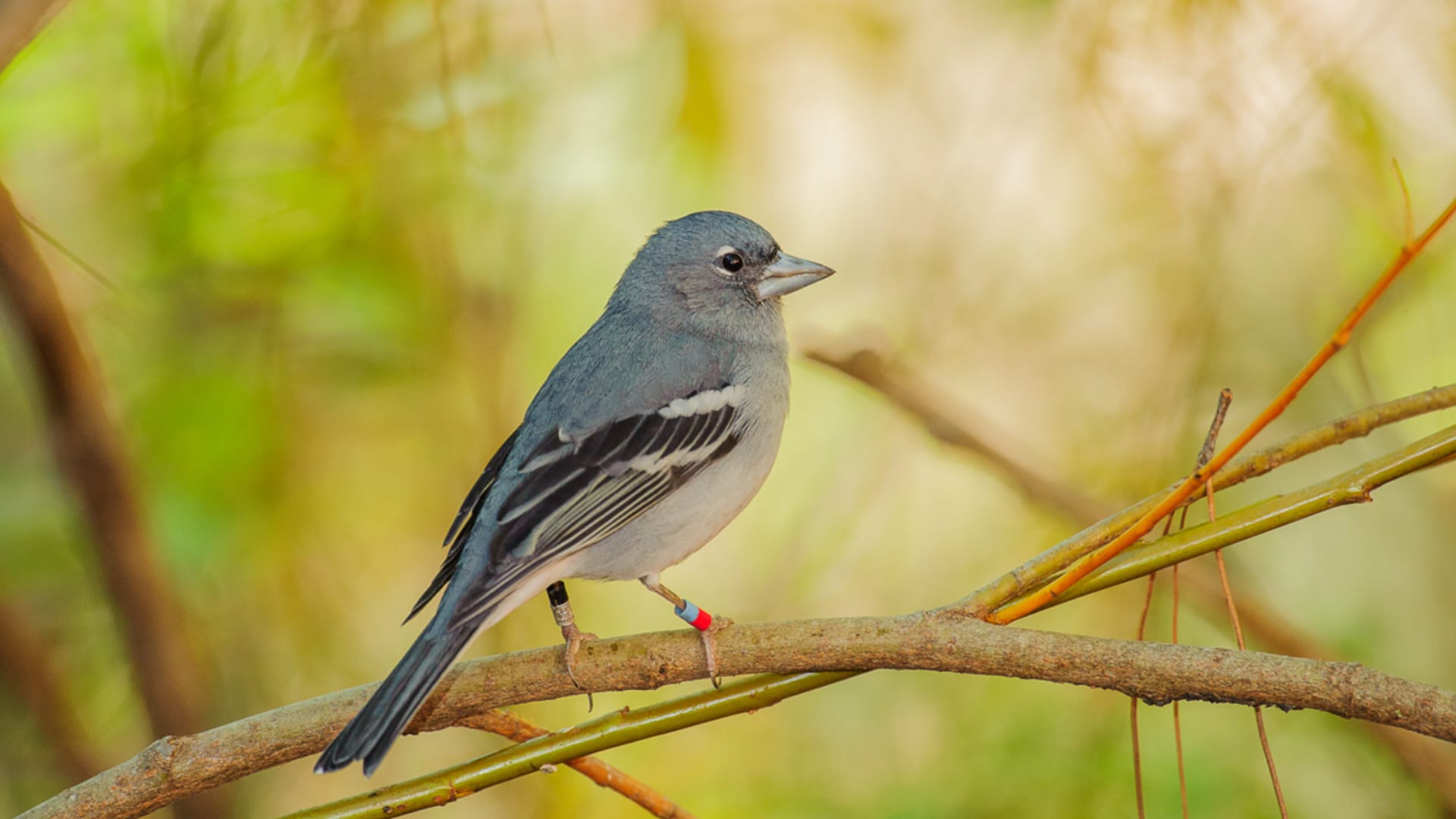
The beautiful Gran Canaria blue chaffinch is a passerine bird species in the finch family Fringillidae, endemic to this island.
The blue finch is a small bird of approximately 6.2 inches. The male has bluish tones while the female and juveniles are olive-brown.
It differs from the Tenerife species Fringilla teydea, (which we will see later), for its smaller size and less intense blue tones. It also has a very marked black stripe on the forehead, a whitish belly and differs especially for showing two visible white stripes on the wings.
Its diet consists mainly of pine seeds and invertebrates. It feeds mainly on granivores, generally pine seeds, which it complements with the intake of insects, fayas and figs in Gran Canaria. The young, on the other hand, feed only on insects.
7. El Pinzón Azul de Tenerife
Fringilla teydea
It is very similar to El Pinzón Azul de Canarias since this one is noticeably larger and has thicker bills. The one from Tenerife is characterized by its gray beak and an uniform plumage, in which the dark wings stand out less. The blue finch is sedentary and is rarely found beyond 5 kilometers around where it lives.
Males in breeding season are unmistakable by their blue plumage, which turns bluish-gray for the rest of the year. At the same time, the females are duller grayish brown, and distinguish from the common chaffinch by having narrower wing stripes and characterizes for beign a slow-breeding bird whose period begins in April and can last until August.
They can be found in the wooded areas of Vilaflor, Arico, Boca de Tauce and Aguamansa. According to some studies, its origin may be because of an invasion of chaffinches from Africa in ancient times, which evolved into a new subspecies due to their isolation in Tenerife.
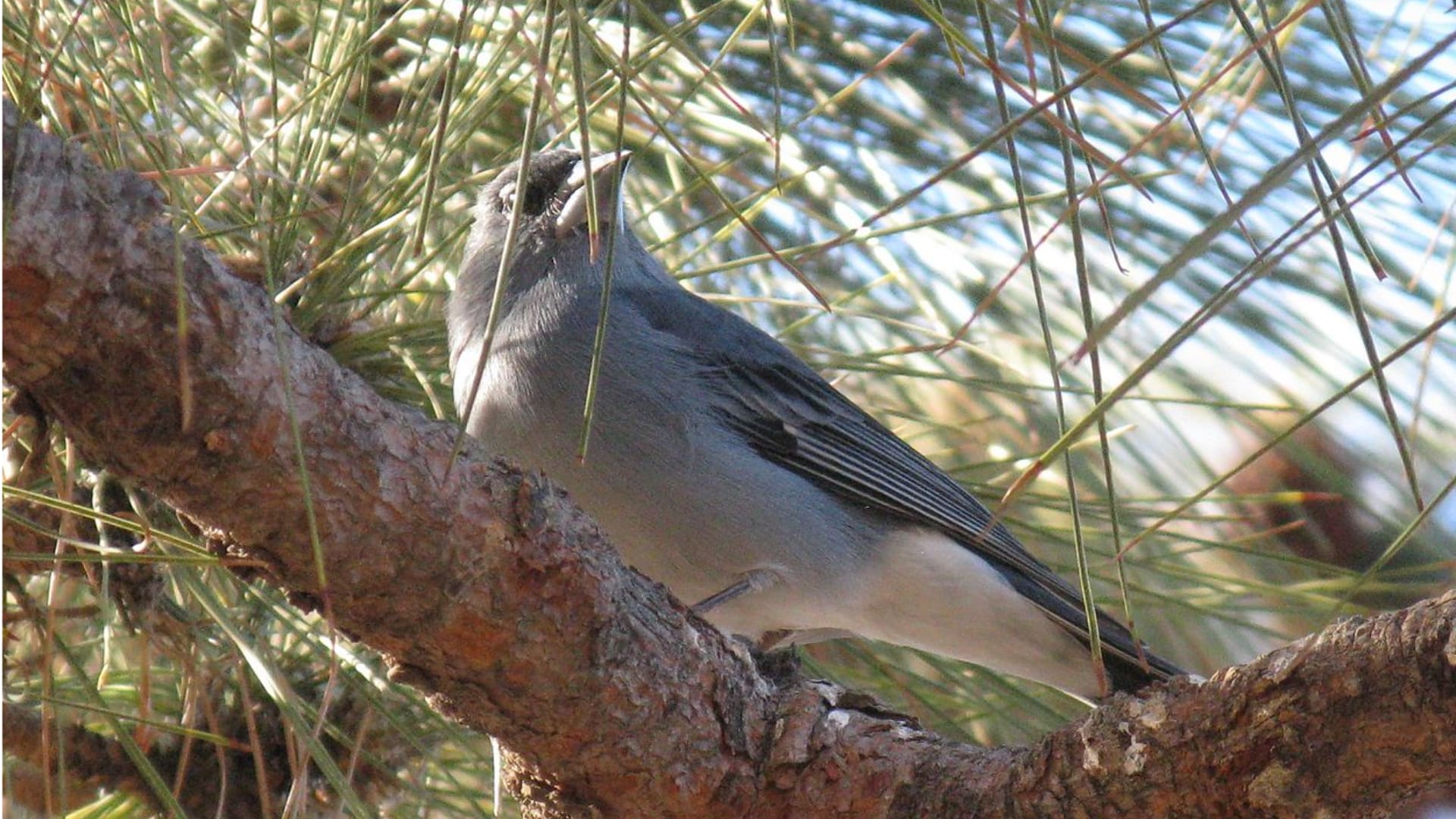
8. La Tarabilla Canaria
Saxicola dacotiae
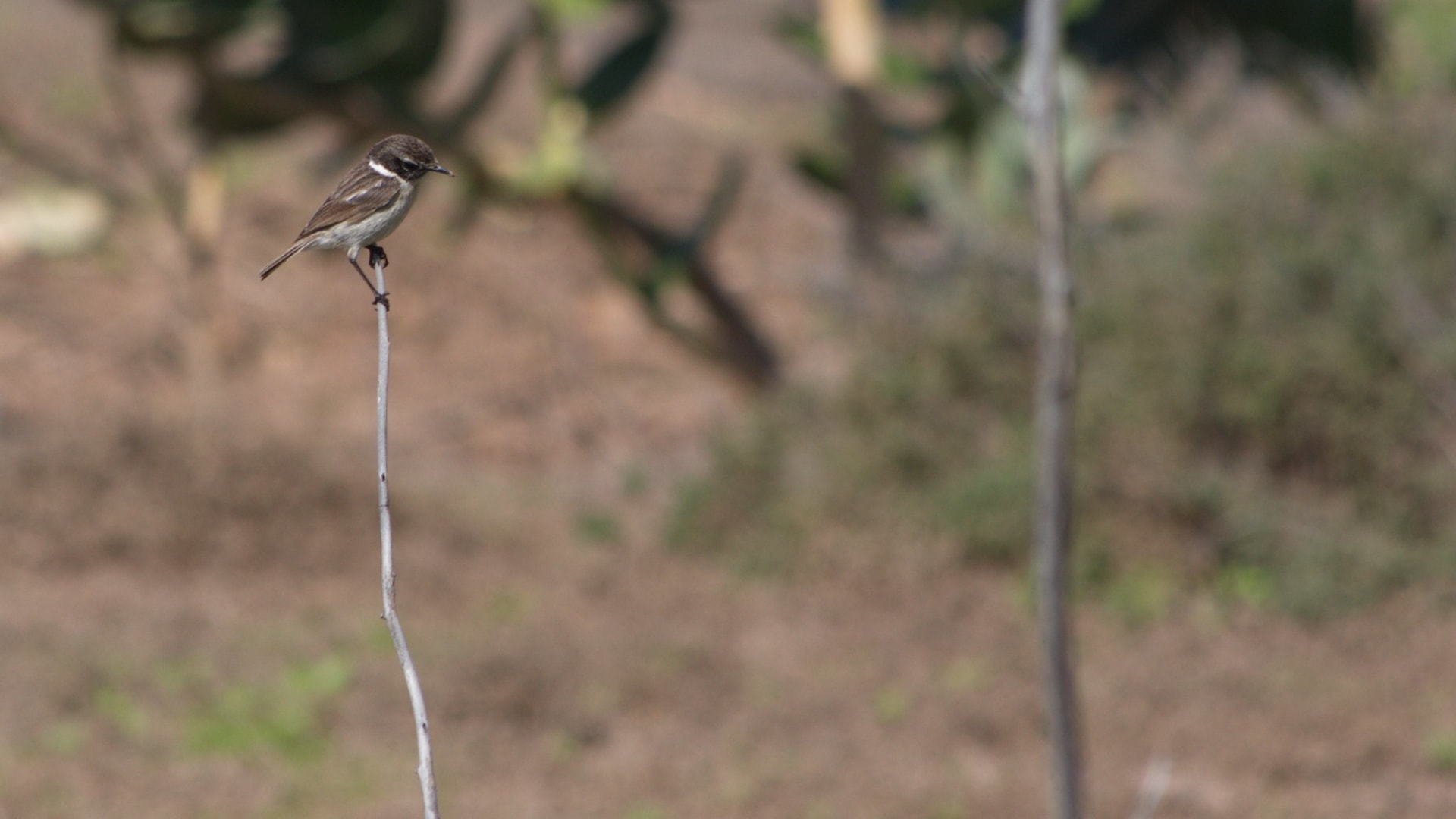
And last but not least, we have the gorgeous Tarabilla Canaria, an endemic species of the island of Fuerteventura, which is primarly found throughout the island.
The Canary stonechat has an intermediate appearance between the common stonechat and the northern stonechat since its body size and shape resemble that of a stylized robin. The female is similar to the male but duller in color, with a striped brown head and no white pattern on the neck.
The upper parts of its body have a coloration similar to the one of the northern stonechat, but with dark brown, a blackish head, and a striped back. It also has a white superciliary stripe that reaches behind the eye and the sides of the neck are also white.
Then we have its chest, which is orange and fades as it moves towards the whitish belly and has a white band on the wings. The species is considered endangered by the invasion of constructions, mainly related to tourism.
However, desertification, goat grazing, and local lowering of the water table also contribute to some habitat loss.
And finally, this species is very faithful to its optimal habitat. It is found mainly on rocky slopes of mountains and ravines with scarce shrubby vegetation, being its only breeding place. And yes, In Spain we have all this variety of landscapes worth discovering. If you want to take a look, here are some of my favorites:
- 7 Different And Incredible Landscapes You Will Find in Spain
- The 16 Spanish National Parks and Their Breathtaking Views
Now that you know everything about the endemic species found in Spain, here is a list of Spaniards’ 100 most watched birds of all time.
| Bird | Frequency |
|---|---|
| Eurasian Blackbird | 42.35% |
| House Sparrow | 41.98% |
| Common Wood-Pigeon | 33.64% |
| Spotless Starling | 31.63% |
| European Goldfinch | 30.58% |
| Eurasian Magpie | 30.05% |
| White Wagtail | 27.98% |
| European Robin | 27.84% |
| Great Tit | 26.54% |
| Common Chaffinch | 26.21% |
| Mallard | 26.14% |
| European Serin | 25.50% |
| Barn Swallow | 24.99% |
| Rock Pigeon | 23.90% |
| Eurasian Collared-Dove | 23.61% |
| European Greenfinch | 21.23% |
| Sardinian Warbler | 19.82% |
| Black Redstart | 19.57% |
| Yellow-legged Gull | 19.14% |
| Gray Heron | 18.97% |
| Eurasian Kestrel | 18.73% |
| Eurasian Blue Tit | 18.40% |
| Eurasian Blackcap | 18.33% |
| European Stonechat | 18.30% |
| Carrion Crow | 17.19% |
| Cetti’s Warbler | 16.53% |
| Common Chiffchaff | 16.20% |
| Common Buzzard | 16.20% |
| Crested Lark | 16.14% |
| Eurasian Linnet | 15.90% |
| Common House-Martin | 15.62% |
| Great Cormorant | 15.34% |
| Eurasian Griffon | 15.14% |
| Common Swift | 14.22% |
| Eurasian Moorhen | 13.57% |
| Corn Bunting | 13.39% |
| Black-headed Gull | 13.28% |
| Little Egret | 13.18% |
| White Stork | 13.15% |
| Black Kite | 12.64% |
| Eurasian Marsh-Harrier | 12.48% |
| Eurasian Wren | 12.15% |
| Eurasian Coot | 11.94% |
| Red Kite | 11.75% |
| Eurasian Hoopoe | 11.48% |
| Zitting Cisticola | 10.80% |
| Short-toed Treecreeper | 10.69% |
| Little Grebe | 10.41% |
| Common Raven | 10.23% |
| Iberian Green Woodpecker | 10.17% |
| Meadow Pipit | 10.11% |
| Long-tailed Tit | 9.88% |
| Song Thrush | 9.38% |
| Booted Eagle | 9.27% |
| Cattle Egret | 9.24% |
| Common Sandpiper | 9.08% |
| European Bee-eater | 8.84% |
| Lesser Black-backed Gull | 8.77% |
| Common Nightingale | 8.06% |
| Black-winged Stilt | 7.97% |
| Great Spotted Woodpecker | 7.85% |
| Eurasian Jay | 7.75% |
| Eurasian Jackdaw | 7.42% |
| Red-legged Partridge | 7.30% |
| Eurasian Crag-Martin | 7.28% |
| Gray Wagtail | 7.16% |
| Coal Tit | 6.99% |
| Northern Shoveler | 6.87% |
| Eurasian Tree Sparrow | 6.54% |
| Common Kingfisher | 6.52% |
| Western Yellow Wagtail | 6.51% |
| Gadwall | 6.48% |
| European Starling | 6.01% |
| Green Sandpiper | 5.97% |
| Great Crested Grebe | 5.88% |
| Cirl Bunting | 5.83% |
| Northern Lapwing | 5.73% |
| Iberian Gray Shrike | 5.55% |
| Eurasian Skylark | 5.36% |
| Green-winged Teal | 5.33% |
| Little Ringed Plover | 5.30% |
| Monk Parakeet | 5.27% |
| Short-toed Snake-Eagle | 5.10% |
| Mistle Thrush | 5.05% |
| Common Pochard | 4.87% |
| Eurasian Nuthatch | 4.77% |
| Iberian Magpie | 4.77% |
| Red-rumped Swallow | 4.72% |
| Woodchat Shrike | 4.64% |
| Thekla’s Lark | 4.61% |
| Spanish Sparrow | 4.56% |
| European Pied Flycatcher | 4.51% |
| Eurasian Sparrowhawk | 4.50% |
| Common Greenshank | 4.49% |
| Wood Lark | 4.48% |
| Greater Flamingo | 4.43% |
| Eurasian Golden Oriole | 4.39% |
| Common Snipe | 4.32% |
| Northern Wheatear | 4.31% |
You’ll only find these unique birds if you come to Spain and not in another area of the world. So… my dear bird lovers… what are you waiting for?




